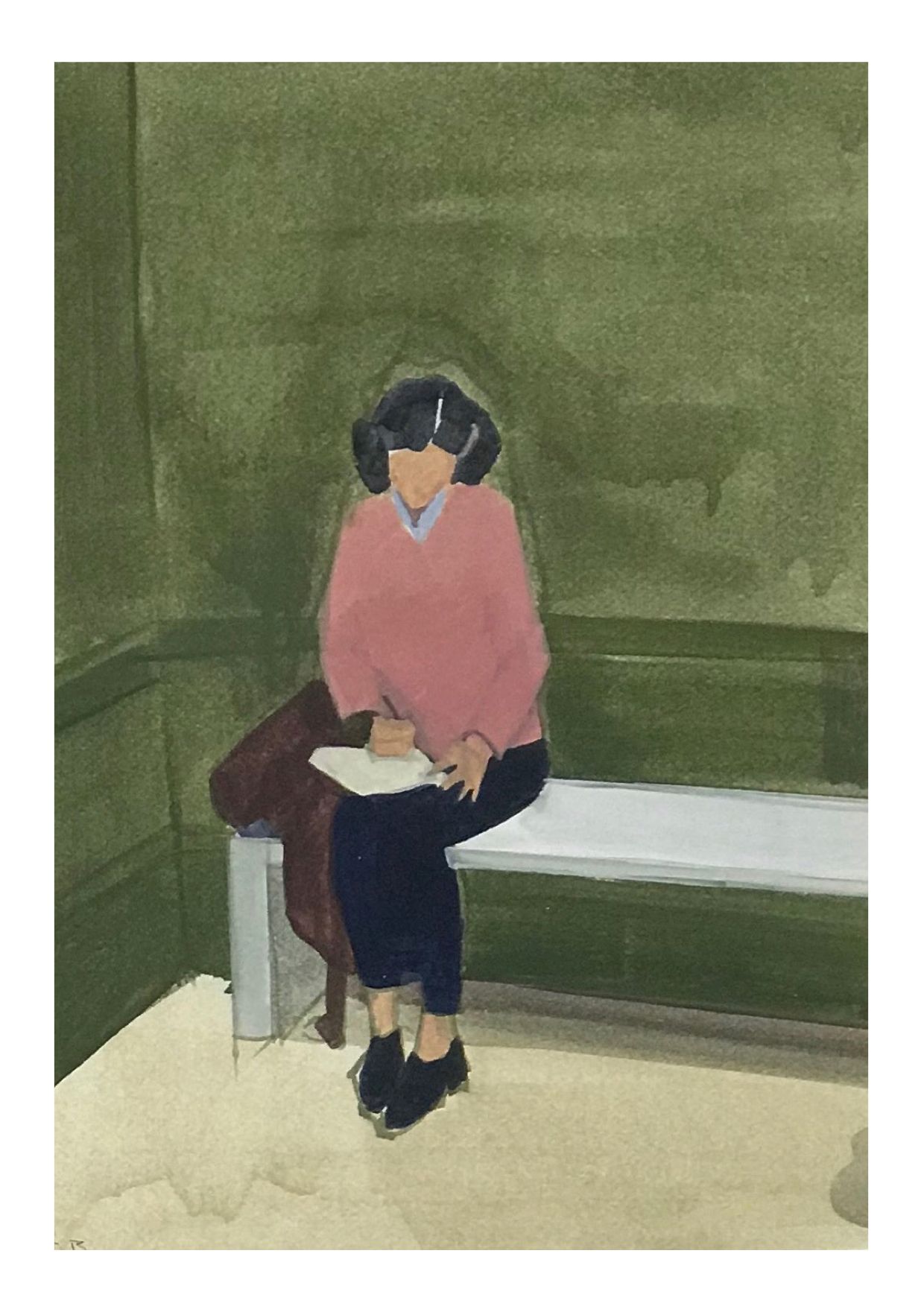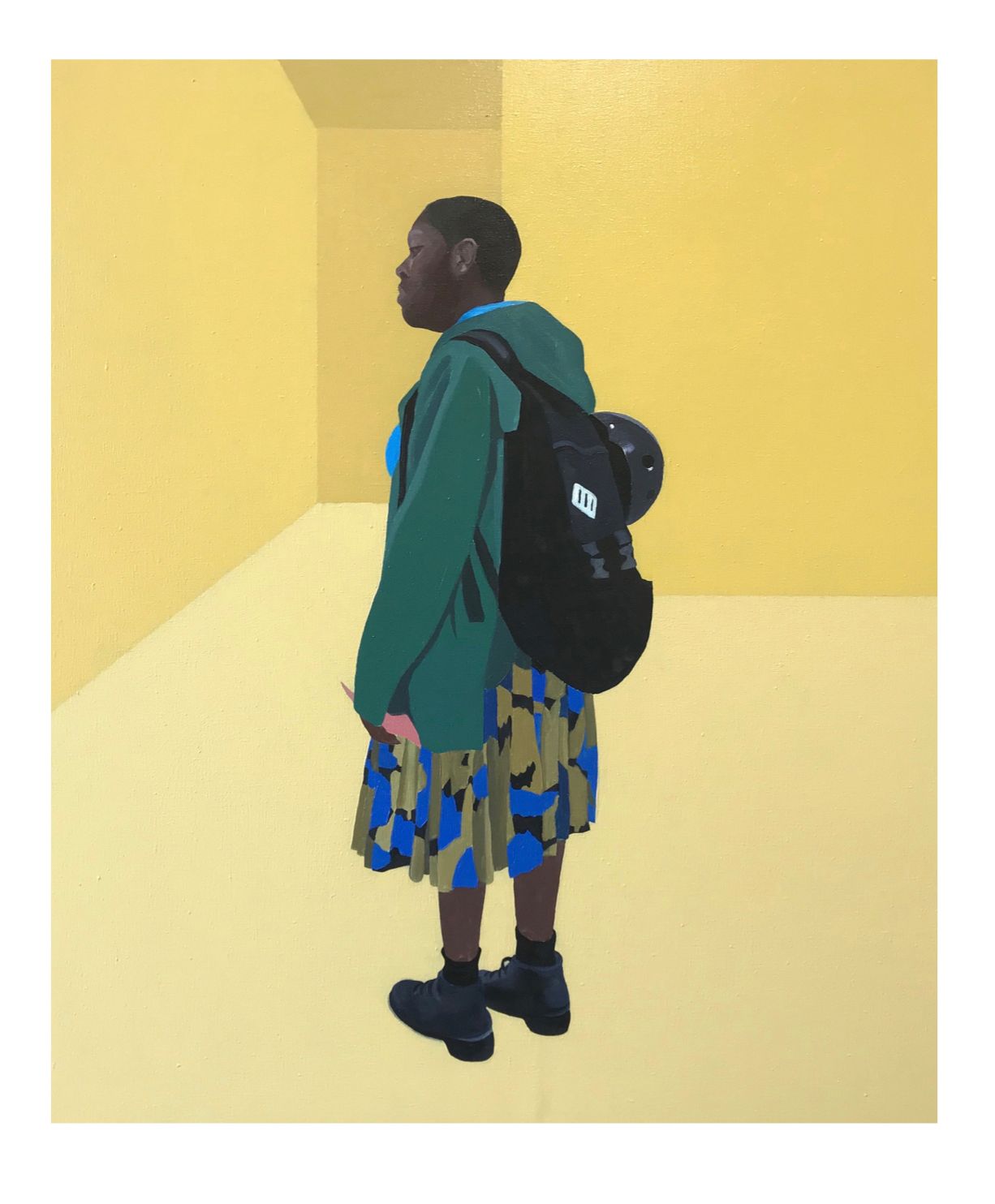
Christabel Blackburn is a London-based artist whose work has been in increasingly high demand ever since she won Sky Arts’ Portrait Artist of The Year, with a pared back colour-blocking painting style that is somewhat reminiscent of the work of David Hockney. She specialises in painting the human form and honed her raw talent for portraiture in both Florence and The London Atelier of Representational Art. Inspired in part by the candid photography of Phillip-Lorca DiCorcia, she would often spend long hours engaged in quiet observation of human beings in public environments as a student, seeking to later capture the essence of their identity upon her canvas using minimal visual information. Here, she tells Collective Culture how the isolated figures of Hopper spurred a childhood interest in in painting, and how the experience of art can help us to meditate upon life, and better appreciate the eternal moment.
What would you say started you out on a creative path in life?
It’s probably a combination of things. My dad was in advertising and is a real intellectual–he knows books, music, film; he's also a musician and plays beautiful classical piano. My mum is a fashion designer, and they both really encouraged the creative thing when I showed an interest in art. My parents are always staying up late discussing social issues and art, and I guess that has something to do with the way I chose to express myself through painting rather than talking, because I always found it quite hard to keep up with the intellectual analysis of things. I'm interested in analysis, and I'll listen, but I always found it much easier to express myself through painting.

Was there any particular artist that you were first drawn to?
My dad had a Hopper poster in his office, and I always loved it. I was kind of drawn to the mystery of those empty scenes. I don't know why I related to those paintings, but I definitely did from a young age. I don't think Hopper meant for his paintings to be lonely–people just kind of project that into them. I think the truth is that he just painted the world around him, and a lot of it was subconscious–he didn't mean to portray loneliness, but if that's what someone sees, then that is what is there. I have always taken my inspiration from the world around me also. I love to observe moments of humankind. I get really involved in the people I’m watching–I wonder what their lives are like. If I'm going to an art gallery then half the time I'm looking more at the people in the gallery than I am at the actual paintings.
What do you seek to capture in the people you paint?
I always try to convey the essence of a person with very minimal information. I don't like a lot of symbolism in paintings, and a lot of busyness. I just want that sense of flesh and bone and, very simply, what they're wearing. I can paint folds and drapery, and all that stuff, but I'm not really interested in that. It's more about how the lines are falling–clothes fall off a person in a certain way because that's how they hold themselves. In a sense, then, that becomes indicative of their character–how the clothes are worn says something about that person. You can tell a lot about a person–who they are, and what they're like–without ever seeing their face. In fact, in many of my portraits there are no details in the face, because the identity is contained in the body language.

What kind of emotions would you say you are trying to engender in the viewer?
I would like people to feel as though they sort of exchange places with the figures in the paintings and find a calm or stillness–I think that’s why I like stripping everything back to the bare essentials. I don’t meditate, but I can get quite anxious, so I think that feeling of calm is important to me–that sense of being in the moment and getting perspective on things; kind of clearing the mind of clutter. I think art can really help you achieve that. If I’m standing in a gallery staring at a Rothko for a long time, for example, I will find that peacefulness and calm. Maybe that's why my own paintings are so sparse, and have these big expanses of blocked colour–it's just kind of clearing the mind, keeping it simple.